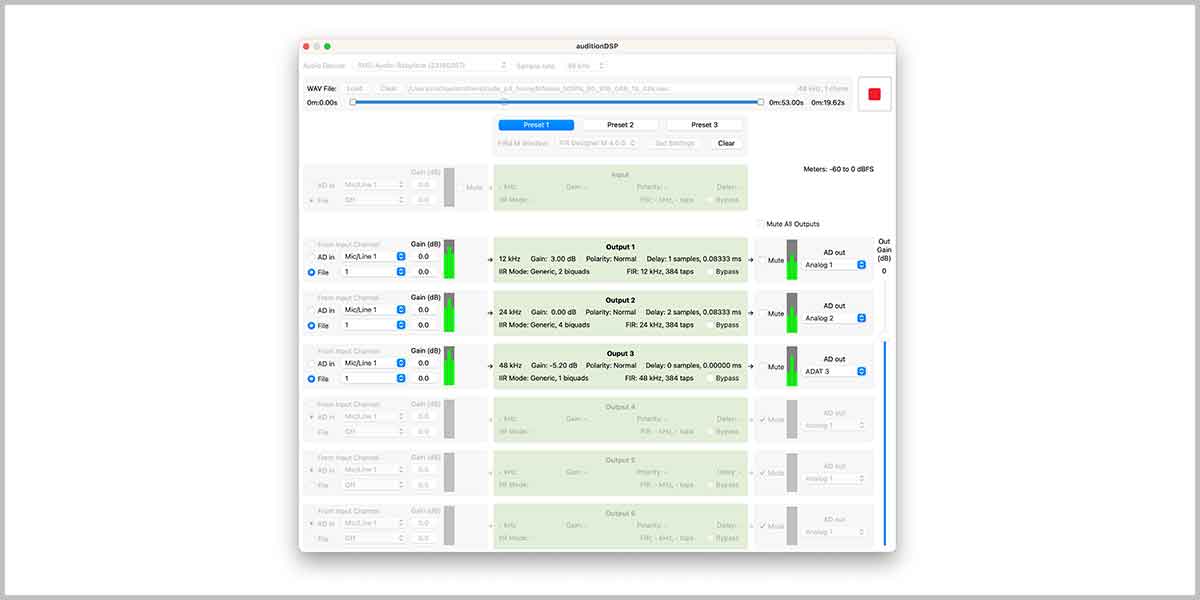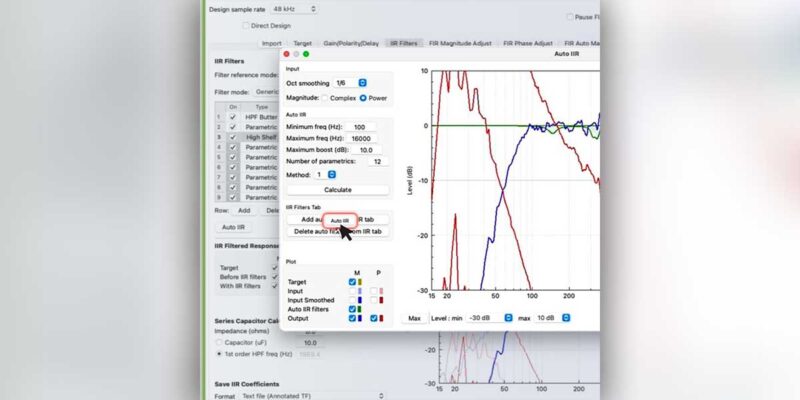Eclipse Audio Updates FIR Designer M Software Tool

Eclipse Audio has just released an update to FIR Designer M, its flagship software tool for creating custom loudspeaker processing (IIR+FIR) and complete multi-channel presets.
The version 4 update adds “auditionDSP” — a dynamic new digital signal processor and audio player. It enables users to listen to their custom processing during development, rather than relying solely on visual plots.
auditionDSP also allows different filtering options to be audibly compared by running processing for up to three loudspeaker presets simultaneously, in real-time, with live switching between presets. “Filters and presets can be perfected quickly, without the need to first export data to an external hardware processor for playback,” said Michael John, lead developer at Eclipse Audio. “This is invaluable when time is tight, such as during live sound installs.”
Audio input for filtered playback via auditionDSP can be either live, or from a loaded WAV file. “We’ve got a range of audio professionals using FIR Designer, including installers, loudspeaker manufacturers, A/V integrators, system engineers, acoustic consultants & audio rental companies,” said John. “Since FIR Designer M is so multi-functional, users typically adopt their own sub-set of features & functions for regular use. Based on beta feedback, we think all our users will find auditionDSP a valuable addition. Who wouldn’t want to listen to their work during the design process?”
The FIR Designer M v4 update also adds a range of other new features and functionality, such as a Contour Plot for off-axis analysis, a Group Delay display, project-specific plot colour customization, upgraded (M1/M2) macOS support & significant computational speedups for faster UI response. In addition, a new “RAM Audio” IIR filter mode has been added to the list of emulated brands, joining Lake, Linea Research, Powersoft, QSC Q-SYS, Symetrix, BSS, Biamp Tesira & Marani. (A “Generic” mode remains available as a starting point for use with processors that don’t have their own branded mode.)




